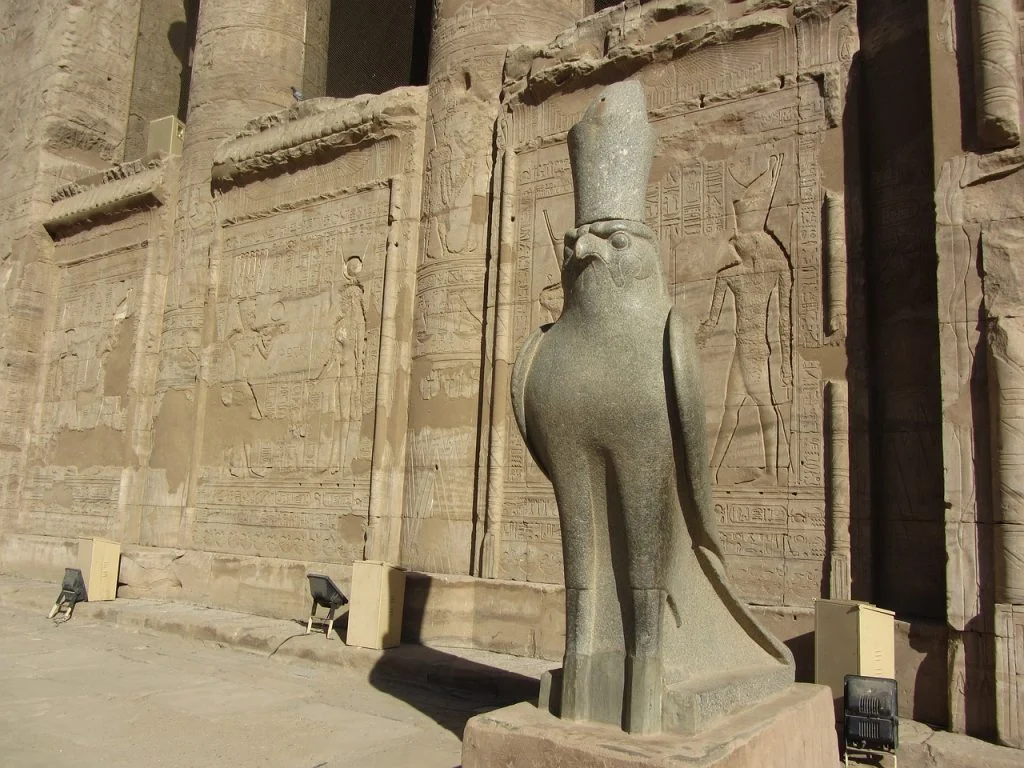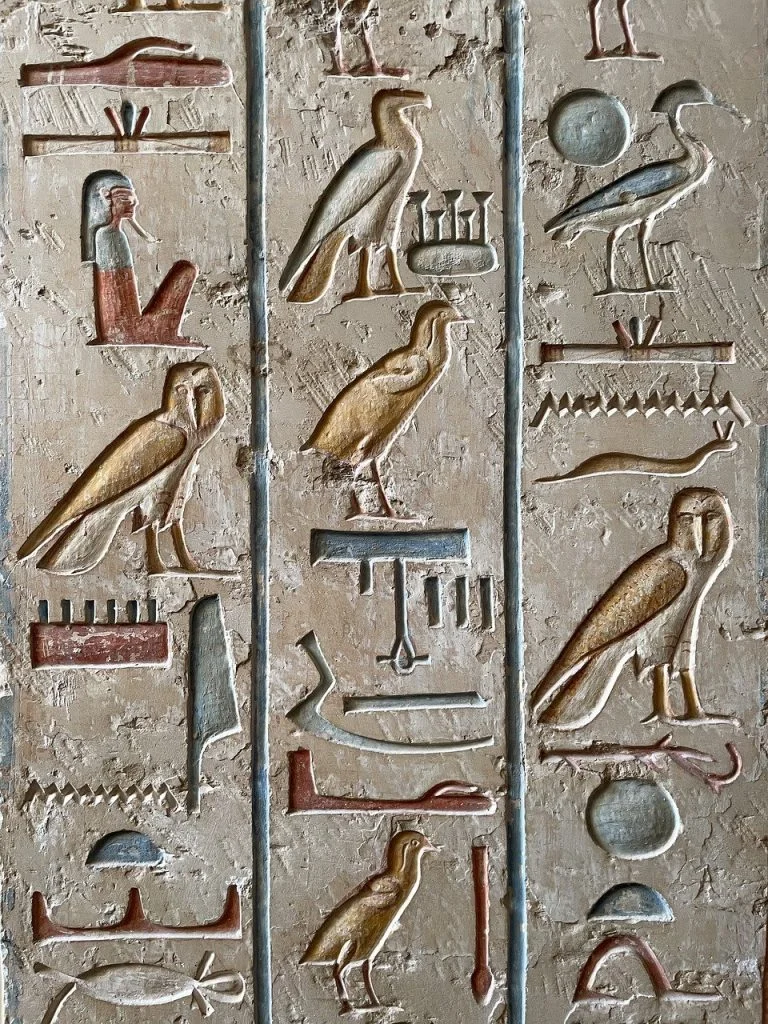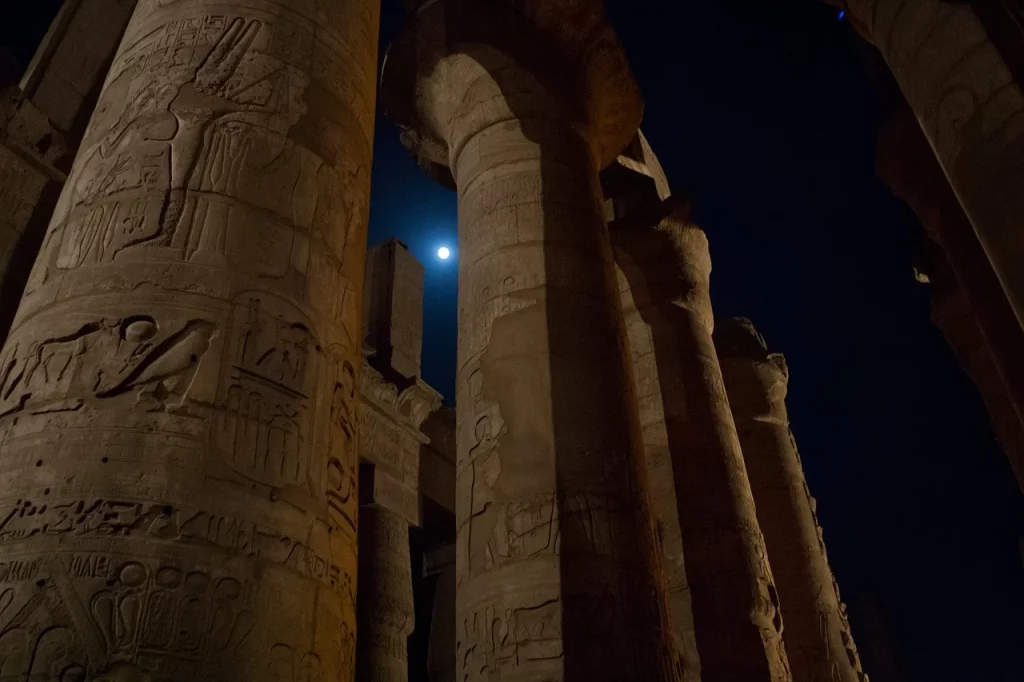A land ruled by god-kings, where people believed cats had mystical powers (and frankly, who doesn’t?) and built pyramids that defied time. Welcome to ancient Egypt, a rollercoaster ride back to a world where hieroglyphs were the trending hashtags and the Nile was the lifeline of an entire civilization.
As we peel back the layers of history, we’ll uncover the facts, the mysteries, and the downright bizarre aspects of ancient Egyptian life. So, have you ever wondered why the Sphinx is missing its nose? Stick around, and you might just find out!
Egypt is the gift of the Nile.
Herodotus
Ancient Egypt Facts
Get ready to explore the mysteries of the pyramids and the Nile on this journey through facts about ancient Egypt. Keep your eyes peeled, because there’s a quiz waiting for you at the bottom of the page!
- Ancient Egypt was one of the world’s oldest civilizations, flourishing for thousands of years.
- The Great Pyramid of Giza, one of the Seven Wonders of the Ancient World, was the tallest man-made structure for over 3,800 years.
- The Egyptians practiced mummification to preserve bodies for the afterlife.
- The hieroglyphic script was one of the writing systems used in ancient Egypt.
- Pharaohs were the rulers of ancient Egypt, considered to be both divine deities and mortal leaders.
- The Nile River was central to ancient Egyptian life, providing water, transport, and fertile soil.
- Cleopatra VII was the last active ruler of the Ptolemaic Kingdom of Egypt.
- Egyptian mythology was rich with gods and goddesses like Osiris, Isis, and Ra.
- The Rosetta Stone was instrumental in deciphering Egyptian hieroglyphs.
- Egyptians built massive temples such as Karnak and Luxor in Thebes.
- King Tutankhamun, known as King Tut, became pharaoh at the age of nine.
- The Book of the Dead was a guide for the deceased to navigate the afterlife.
- Pyramids were primarily built as tombs for pharaohs and their consorts.

- Ancient Egyptians invented paper-like papyrus, which they used for writing.
- Women in ancient Egypt could own property, initiate divorce, and have legal rights.
- The ancient city of Memphis was the capital of Old Kingdom Egypt.
- Obelisks were tall, slender monuments often placed at temple entrances.
- The Sphinx, with a lion’s body and a human head, is a famous ancient Egyptian monument.
- Medical practices in ancient Egypt were advanced for their time.
- Ancient Egyptians believed in an afterlife where they would be judged by their deeds.
- Mathematics and geometry were used extensively in Egyptian architecture.
- The Egyptian calendar was one of the first to have 365 days and 12 months.
- Agriculture was the backbone of Egypt’s economy, with crops like wheat and barley.
- The Valley of the Kings is a famous burial site for pharaohs like Tutankhamun.
- Art in ancient Egypt was highly stylized and symbolic.
- Farming techniques were heavily reliant on the Nile’s annual flooding.
- Hatshepsut was one of the most successful and longest-reigning female pharaohs.
- The ancient Egyptian language was spoken for nearly 3,000 years.

- Cats were revered in ancient Egypt, often depicted in art and mummies.
- Gold and semi-precious stones were extensively used in Egyptian jewelry.
- The Old, Middle, and New Kingdoms are the three main periods in ancient Egyptian history.
- Egyptian society was structured in a hierarchical system.
- Chariots were introduced to Egypt by the Hyksos invaders.
- The Lighthouse of Alexandria, another ancient wonder, was built during the Ptolemaic Kingdom.
- Beer and bread were staple foods in the ancient Egyptian diet.
- Egyptians believed in more than 2,000 deities in their polytheistic religion.
- The Battle of Kadesh was a major chariot battle between Egypt and the Hittites.
- Amulets were commonly used for protection and healing in ancient Egypt.

- The First Dynasty of Egypt started around 3100 BC, unifying the country.
- Papyrus scrolls contained texts on various subjects, including medicine and literature.
- The discovery of Tutankhamun’s tomb in 1922 by Howard Carter was a major archaeological event.
- Egyptian architects were skilled in creating complex structures like pyramids and temples.
- Relief sculptures and paintings adorned the walls of tombs and temples.
- The Red Sea was significant for trade and expeditions in ancient Egypt.
- Faience, a glazed ceramic, was a popular material for Egyptian crafts.
- Trade expeditions to Punt were important for obtaining luxury goods.
- Canopic jars were used to store the internal organs of mummies.
- The Hyksos invasion around 1650 BC introduced new technologies to Egypt.
- Scribes were highly respected in Egyptian society for their literacy and administrative roles.
- Solar boats, buried near pyramids, were intended for the pharaoh’s use in the afterlife.
Ancient Egypt Myths

Having explored the facts, let’s now shift our eyes to some popular myths about ancient Egypt. It’s time to uncover the actual truth behind them.
- The Pyramids Were Built by Slaves
Contrary to popular belief, the Great Pyramids of Giza were not built by slaves. Archaeological evidence suggests they were constructed by paid laborers. These workers were likely proud to contribute to such an important national project and were well-cared for, with evidence of medical care and substantial meals. - Mummies Are Cursed
The idea of cursed mummies is a Hollywood invention with no basis in historical fact. Mummification was a respectful process intended to prepare the deceased for the afterlife. There’s no evidence that ancient Egyptians intended curses for tomb raiders; this is more a tale of modern imagination than ancient belief. - Cleopatra Was Egyptian
Cleopatra, one of the most famous figures of ancient Egypt, was actually of Greek descent. She belonged to the Ptolemaic dynasty, a Greek royal family that ruled Egypt after the death of Alexander the Great. She was culturally Egyptian but ethnically Greek. - Ancient Egyptians Worshipped Cats
While cats were highly respected and even revered in ancient Egypt, they were not exactly worshipped as gods. Cats were appreciated for their ability to control pests and were associated with certain deities. Killing a cat, even accidentally, was considered a serious crime. - Hieroglyphs Are Just Symbolic Pictures
Hieroglyphs are often thought of as simple pictograms, but they are actually a complex system combining logographic, syllabic, and alphabetic elements. This writing system was sophisticated and was used for more than just monumental inscriptions, including religious and administrative texts.
No products found.
Ancient Egypt Quotes

I am sharing with you some of my favorite quotes about ancient Egypt. Feel free to share yours in the comment section so I can add them here as well.
Man fears time, yet time fears the pyramids.
Arab proverb
This Arab proverb highlights the enduring legacy of the Egyptian pyramids, which have withstood the test of time far better than any human achievement.
The past is never dead. It’s not even past.
William Faulkner
Though not specifically about Egypt, this quote by William Faulkner resonates with the way ancient Egypt’s history continues to influence the modern world.
Egypt is a great place for contrasts: splendid things gleam in the dust.
Gustave Flaubert
French novelist Gustave Flaubert, reflecting on his travels, captures the juxtaposition of ancient grandeur and the present-day conditions in Egypt.
I am Egypt. Egypt and I are one.
Cleopatra
Attributed to Cleopatra, this quote expresses the deep connection and identification she felt with her kingdom, emphasizing her role as a pharaoh.
The land of Egypt is first and foremost a gift of the mind, not a gift of the river.
Naguib Mahfouz
Egyptian Nobel laureate Naguib Mahfouz offers a unique perspective, suggesting that the true value of Egypt comes from its cultural and intellectual contributions, not just its natural resources.
Ancient Egypt FAQ

As you journey deeper into the sands of knowledge about ancient Egypt, let’s explore some frequently asked questions. Remember, the wisdom you gather here will be your guide in the upcoming quiz!
- Was Ancient Egypt a desert?
Ancient Egypt was not entirely a desert. While much of the surrounding land was desert, civilization thrived along the fertile banks of the Nile River. This river provided the necessary water and resources for agriculture and supported the population. - How many Egyptian gods are there?
The number of gods in ancient Egyptian mythology is vast, with over 2,000 deities recorded. These gods represented various aspects of nature, life, and the cosmos. Some of the most famous include Ra, Isis, Osiris, and Anubis. - Does Ancient Egypt still exist?
Ancient Egypt, as a civilization, no longer exists. It was a powerful culture that lasted for thousands of years, but it eventually faded due to various factors, including foreign invasions and internal strife. However, its legacy lives on in its monuments, art, and cultural influences. - How did Ancient Egypt look like?
Ancient Egypt was a land of contrasts, with the lush, green banks of the Nile contrasting sharply with the surrounding deserts. Magnificent structures like pyramids and temples dominated the landscape. Cities were bustling with life, markets, and artisans at work. The style of buildings and art was unique, featuring hieroglyphs and distinctive column designs. - Was Ancient Egypt an empire?
Yes, at various points in its history, ancient Egypt functioned as an empire. During these periods, it extended its influence over neighboring regions, exerting control and expanding its culture and political reach. These were times of great power and wealth for Egypt, marked by monumental building projects and significant cultural development.
No products found.
Ancient Egypt Trivia

Get ready to explore the sands of time with the Ancient Egypt Quiz. Miss a question, and you might find yourself mummified in your sleep!
Conclusion
So, there you have it – a whirlwind tour of ancient Egypt, complete with pharaohs, pyramids, and a pinch of mummy dust. We’ve traveled back in time, uncovered some fascinating facts, and thankfully avoided any curses (so far).
But let’s ponder this: If you could have a chat with an ancient Egyptian, what would you ask? Would it be about their daily lives, their monumental building techniques, or how they managed to make their eyeliner so on point?
Drop your thoughts in the comments, and let’s keep the conversation as alive as a mummy in a movie!
6 Sources Used For This Article28 Strange Facts About The Pyramids Of Egypt Very Few Know – The Travel
All About Egypt – Easy Science For Kids
Treasures Of Egypt – Centrosophia
What Makes Ancient Egyptian Art And Architecture Stand Out? – Architecture Maker
Dynastic Egypt – Libre Texts


